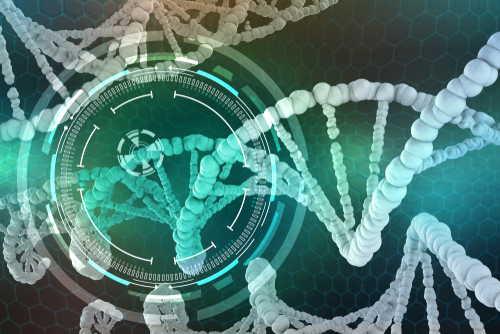Pituitary Adenomas in Cushing’s Disease Differ Between Men, Women, Study Reports

The pituitary adenomas that cause Cushing’s disease in men differ from those in women in hormone content and gene expression patterns, a study shows.
These findings suggest that biological sex may also play a role in the molecular behavior of tumors, in addition to prevalence and clinical course. A sex-based analysis of tumors and therapies may make sense in the context of Cushing’s disease, the researchers said.
The study, “Sexual Dimorphism in Cellular and Molecular Features in Human ACTH-Secreting Pituitary Adenomas,” was published in the journal Cancers.
When it comes to Cushing’s disease, some disparities exist between males and females. It is more common in women, but the men who develop the disease usually younger, with more severe clinical symptoms and a less favorable response to surgery and medical treatment.
Recent studies have identified genetic mutations in the USP8 and USP48 genes that occur more often in women than in men with Cushing’s disease, suggesting that characteristics of the adenoma itself may contribute to sex-specific differences in Cushing’s.
In this study, a team of Italian researchers evaluated the molecular features of pituitary adenomas, which cause Cushing’s disease by producing too much adrenocorticotrophic hormone (ACTH), and the differences between female and male patients.
They examined a total of 153 ACTH-secreting pituitary adenomas, collected from 31 men and 122 women, at a mean age of 40.1 years old, during surgery for Cushing’s disease.
A total of 124 adenomas were cultured in the lab to assess the spontaneous production of ACTH. After four and 24 hours of culture, adenomas from men secreted significantly less ACTH than adenomas collected from women.
Tumors from men and women responded equally to corticotropin-releasing hormone (CRH) stimulation — which is expected to raise ACTH levels — and to dexamethasone incubation, which lowers ACTH secretion. But because initial levels in men were already lower than those of women, ACTH levels after CRH or dexamethasone tests were also lower in men.
Interestingly, levels of POMC — the gene that provides instructions for making a precursor of ACTH — were similar between both sexes, suggesting that sex probably plays a role in how the POMC protein is processed and secreted at later stages.
Researchers also evaluated the gene expression profile of tumors from men and women. Gene expression is the process by which information in a gene is synthesized to create a working product, like a protein.
As in previous studies, a greater proportion of women than men had a USP8 genetic variant (32.2% vs. 4.2%). Only one adenoma from a male patient showed a USP8 mutation.
In addition, there were 708 genes that were expressed only in adenomas from men, and 935 genes found only in adenomas from women. Some of these genes ended up having similar functions in men and women, although through distinct pathways. Some of the genes with higher expression levels in men were encoded in the Y chromosome (which exists only in men), while none of the genes overexpressed in women originated from the X chromosome (which exists in both men and women).
Notably, several of the genes whose expression levels were higher in men were associated with tumor formation, “and thus could play a role in the less favourable course of corticotrope [ACTH-secreting pituitary] adenomas in male patients,” the researchers wrote.
“In conclusion, our study is the first to report on sexual dimorphism [gender differences] in molecular and cellular features in human ACTH-secreting pituitary adenomas and provides the basis for novel, gender-dependent perspective on the pathophysiology [development] of Cushing’s disease,” they wrote.
“Future studies on corticotrope tumours have to take sexual dimorphism into account and, possibly, identify gender-tailored therapeutic approaches,” they added.






